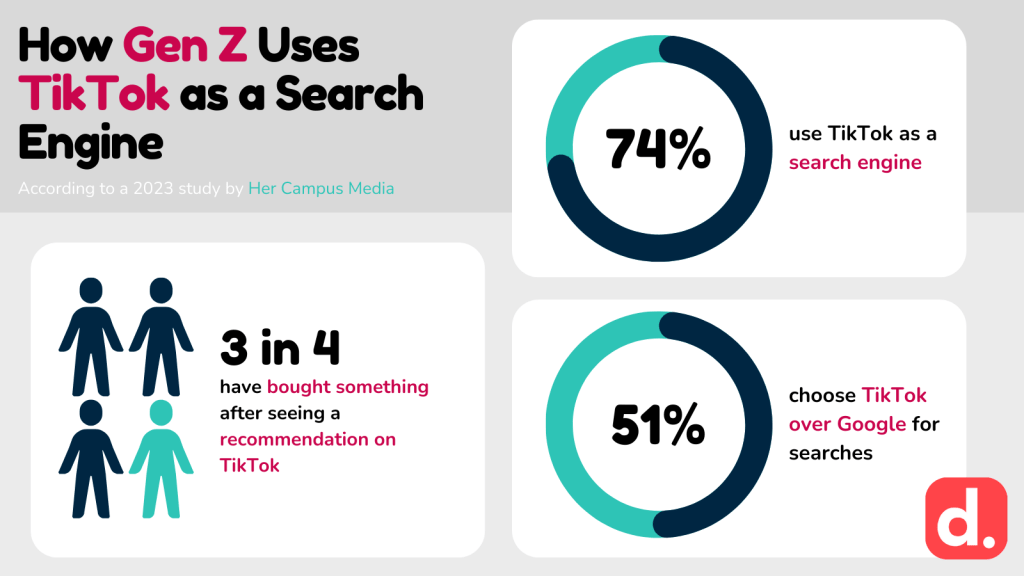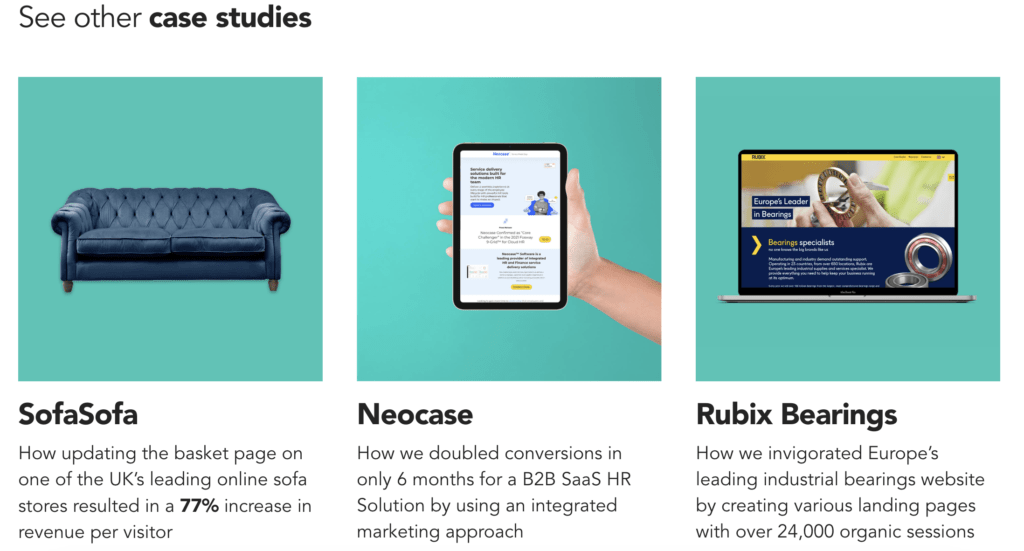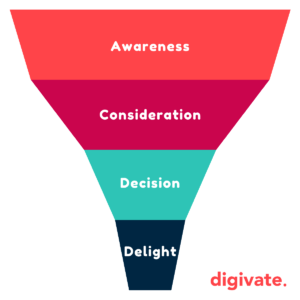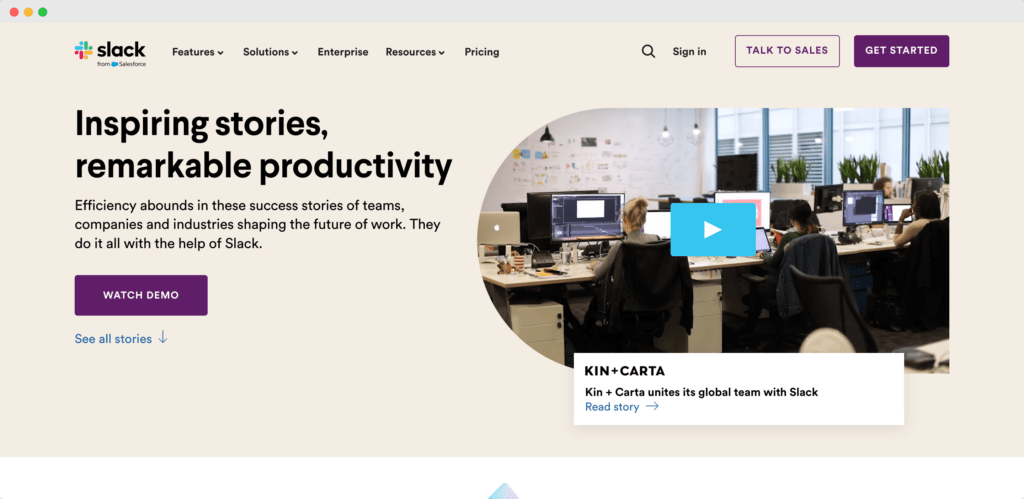
Do you ever feel like your B2B marketing efforts are getting swallowed whole by the ever-growing jungle of competition? You create content, you share it on social media, but crickets. Nothing. Nada. Tumbleweeds.
This content graveyard is a common pitfall for B2B businesses struggling to connect with their target audience. But what if there was a way to cut through the noise, establish yourself as a trusted leader, and attract high-quality leads like a magnet?
We are here to tell you that there is – content marketing. This strategic approach uses valuable, informative content to address the specific pain points and challenges businesses like yours face. Luckily for you, once you’ve read this article you’ll be fully equipped to create amazing B2B content and to get it in front of the right audience.
First Things First, What is B2B Content Marketing?
B2B content marketing is a strategic marketing approach where businesses create and distribute valuable, informative content to attract and engage other businesses. This content focuses on the specific needs and challenges faced by companies within your target market.
B2B vs B2C Content Marketing
| Feature | B2B Content Marketing | B2C Content Marketing |
| Target Audience | Businesses, organisations, decision-makers | Individual consumers |
| Content Focus | Logic, data, ROI, solutions to business problems | Emotion, brand image, building connections, solving personal needs |
| Content Tone | Professional, informative, authoritative | Conversational, engaging, relatable |
| Buyer Journey | Longer, complex, involves multiple decision-makers | Shorter, simpler, individual decision-maker |
| Content Goals | Lead generation, thought leadership, brand awareness, customer retention | Brand awareness, product sales, building brand loyalty |
| Content Formats | White papers, case studies, webinars, ebooks, infographics | Blog posts, social media content, videos (ads & explainer), user-generated content |
| Metrics | Leads generated, website traffic, brand mentions, ROI | Website traffic, social media engagement, conversion rates, sales |
Why is Content Marketing Important for B2B Businesses?
B2B content marketing is a strategic and cost-effective approach to attract, educate, and convert potential clients.
Ditch the boring brochures and skip the stale sales calls! Content marketing positions you as the industry guru, the go-to resource with all the answers. It builds trust and credibility faster than you can say ‘lead generation. Plus, it’s a budget-friendly way to keep your brand at the forefront of your target audience’s mind.
Let’s look at the benefits in more detail:
- Building trust and credibility: The B2B sales cycle is typically longer and involves multiple decision-makers. High-quality content packed with valuable insights and industry expertise establishes your company as a thought leader. This builds trust and positions you as a reliable partner for potential clients.
- Educating and nurturing leads: Informative content like blog posts, white papers, and webinars educate potential customers about your industry, the challenges they face, and how your solutions address them. This approach nurtures leads through the buyer’s journey, moving them from awareness to consideration.
- Targeted lead generation: B2B content marketing allows you to target your ideal customers by creating content that directly addresses their specific needs and pain points. This targeted approach attracts qualified leads who are genuinely interested in what your business offers.
- Cost-effective marketing: Compared to traditional advertising methods, content marketing offers a more cost-effective way to reach your target audience. By creating valuable content that ranks well in search engines, you can attract organic traffic to your website and generate leads over time.
- Improved brand awareness: Consistent content creation keeps your brand at the forefront of your target audience’s mind. This ongoing brand awareness makes your company the first thought when a potential client has a need that your business can address.
- Stronger customer relationships: Valuable content fosters deeper relationships with existing customers. Regularly providing industry insights and thought leadership pieces demonstrates your commitment to their success, strengthening customer loyalty and retention.
- Measurable results: With content marketing, you can track key metrics like website traffic, lead generation, and engagement to gauge the effectiveness of your efforts. This data allows you to refine your strategy and optimise your content for better results.
Types of B2B Content
B2B content marketing thrives on variety – we’re talking about a smorgasbord of content formats that cater to every preference and stage of the buyer’s journey. Here’s a breakdown of some popular content formats and their strengths:
Blog Posts (like this one)
Versatile blog posts are perfect for top-of-the-funnel (TOFU) content – and if you play your cards right they can even be evergreen. These posts allow you to establish authority, share industry insights, and educate potential customers about your products or services.
Infographics
Visually compelling and easily digestible, infographics condense complex information into bite-sized chunks that are easily shareable by others. They’re great for sharing data, statistics, and step-by-step processes on social media and blog posts.
Here’s an example of an infographic our content team created:

Videos
Engaging and dynamic, videos can explain complex concepts, showcase product demos, and tell compelling stories. They cater well to visual learners and can be used across various stages of the buyer’s journey.
White Papers
In-depth and authoritative, white papers are ideal for mid-funnel (MOFU) content. They provide valuable research, data-driven analysis, and solutions to specific problems, positioning you as a trusted advisor.
Case Studies
Credibility builders for the bottom of the funnel (BOFU), case studies showcase your expertise by demonstrating how you’ve helped similar businesses achieve success.

Podcasts
In-depth and informative, podcasts allow you to establish thought leadership through expert interviews, industry discussions, and educational content. They’re perfect for on-the-go consumption and build a loyal listener base. Plus, influencer marketing on podcasts offers B2B businesses a unique opportunity to reach targeted audiences through trusted industry experts, leveraging their credibility and reach to build brand awareness and generate leads.
6 Best Practices & Strategies for B2B Content Marketing
1. Define Your Goals & Target Audience
Before creating your content, it’s crucial to establish a clear roadmap for your B2B content marketing efforts and what you want to achieve from them. This starts with defining your goals. Here are some key questions to ask yourself:
- What do you want to achieve with your content marketing?
- Generate leads: Is your primary objective to attract potential customers and fill your sales pipeline?
- Build brand awareness: Do you want to increase your brand recognition within your target market?
- Establish authority: Are you aiming to position your company as an industry expert and trusted advisor?
- Boost customer retention: Do you want to nurture existing customer relationships and encourage repeat business?
Once you have your goals in mind, it’s time to understand who you’re creating content for. Here’s where audience research comes in. By conducting thorough audience research, you can develop a detailed buyer persona. This persona represents your ideal customer, allowing you to tailor your content to their specific needs and preferences.
Imagine your perfect customer. Here’s how to flesh out their profile:
- Demographics: Company size, industry, location, and job titles of decision-makers.
- Needs and challenges: What are the specific challenges and pain points your target businesses face?
- Goals and aspirations: What are their business objectives, and how can your solutions help them achieve them?
- Information consumption habits: Where do they get their industry news and information? What kind of content do they prefer?
2. Plan Your Content Out
A content calendar is your roadmap to B2B content marketing success. It ensures a consistent flow of high-quality content, keeps your team organised, and helps you track progress towards your goals. Here’s how to develop an effective content calendar:
- Content themes: Start by brainstorming content themes that align with your overall marketing goals and target audience – you want to make sure you’re building topic authority. Consider industry trends, upcoming events, and hot topics relevant to your niche.
- Content mix: Plan a diverse mix of content formats to cater to different audience preferences and stages of the buyer’s journey. Consider blog posts, infographics, white papers, case studies, videos, and social media content.
- Content frequency: Determine a realistic content publishing schedule. Consistency is key, but it’s better to publish high-quality content less frequently than rush out mediocre pieces.
- What to include: Each content calendar entry should include title, format, target persona, buyer journey stage, keywords, creator, publication date, and promotion channels.
- Stay flexible: Be prepared to adjust your calendar as needed to ensure your content remains timely and relevant.
- Use tools: Content calendar tools range from free options like Google Sheets to comprehensive paid platforms like Buffer or CoSchedule, helping you plan, schedule, and manage your B2B content creation.
3. Optimise Your Content
Content marketing and search engine optimisation are a perfect match. Integrating SEO best practices into your content creation process is crucial for attracting qualified traffic. Here’s a breakdown of the key elements and how to implement them:
- Keyword research
- Identify seed keywords: Brainstorm broad topics relevant to your niche.
- Utilise keyword research tools: Explore tools like Google Keyword Planner or SEMrush (we use both) to discover specific keywords with search volume and lower competition.
- Target long-tail keywords: Focus on longer, more specific phrases (e.g., ‘best running shoes for beginners’) as they often have higher conversion rates.
- Analyse search intent: Understand what information users are seeking with their keywords (informational, transactional, navigational). Tailor your content to fulfill that intent.
- On-page optimisation
- Keyword integration: Naturally incorporate your target keywords throughout the content, but prioritise readability and avoid keyword stuffing.
- Proper titles & headings: Use clear, concise titles and H1-H2 headings that contain the target keyword in the most natural way
- Meta descriptions: Craft engaging meta descriptions (around 150 characters) that summarise your content and entice users to click. Include your target keyword.
- Image optimisation: Include relevant images with descriptive alt tags containing your keywords.
- Content formatting: Break up your text with bullet points, numbered lists, and subheadings for easier reading. Or if you’re using social media to distribute your content then it’s important to cater to the platforms’ algorithms in terms of length, formatting, emoji’s and hashtags.
4. Audit Your Current Website Content
While creating fresh content is essential, B2B content marketing can be significantly boosted by taking a step back and analysing what you already have. A content audit acts like a checkup for your website’s content, revealing valuable insights to optimise your strategy. It helps you identify areas where you might have missed the mark, like topics not yet covered for your audience. This allows you to create targeted content that fills those gaps.
The audit can also unearth missed opportunities – valuable content that might be underperforming due to outdated information or lack of SEO optimisation. With a refresh and some strategic tweaks, you can breathe new life into existing content and maximise its reach.
But a content audit goes beyond just housekeeping. By analysing metrics like traffic and conversions, you gain a clear picture of what content resonates with your audience and drives business goals. This data empowers you to refine your overall strategy, tailoring your message to address your audience’s specific needs and positioning your brand as a thought leader.
Finally, the audit helps you identify opportunities to optimise your content for search engines, ensuring it reaches the right eyes at the right time.
Here’s a breakdown of the key steps involved in a content audit:
- Define your goals:
- What do you want to achieve with your content? (e.g., Increase organic traffic, improve brand awareness, generate leads)
- Knowing your goals helps prioritise your audit and tailor it to your specific needs.
- Gather your content:
- Identify all your content assets, including blog posts, articles, landing pages, product descriptions, videos, etc.
- Use website crawling tools like Screaming Frog or create a spreadsheet to collect URLs and basic information about each piece of content.
- Organise and analyse:
- Categorise your content by type, format, publication date, and other relevant criteria.
- Analyse key metrics like organic traffic, bounce rate, conversion rate, and social shares using tools like Google Analytics and Search Console.
Here are some aspects to consider during the analysis:
- Content relevance: Is the content aligned with your target audience and current brand messaging?
- Content quality: Is the information accurate, up-to-date, and well-written?
- SEO optimisation: Are relevant keywords integrated naturally?
- Engagement: Is the content generating social shares, comments, or conversions?
- Create an action plan:
- Based on your analysis, categorise your content into different buckets:
- Keep high-performing, valuable content that needs minimal refresh.
- Improve content with potential that needs updates, optimisation, or expansion.
- Consolidate and combine similar content pieces for a better user experience.
- Remove outdated or irrelevant content that might be hindering your website’s performance.
- Develop a plan to address each category, outlining specific actions like content updates, keyword optimisation strategies, or content removal procedures.
- Take action and monitor progress:
- Implement your action plan and track the results over time.
- Regularly revisit your content audit to stay up-to-date and ensure your content remains valuable and effective.
5. Connect With All Stages Of The Marketing Funnel
The marketing funnel visualises the customer journey, with each stage requiring specific content to nudge them towards a purchase.

Awareness stage: Attract and educate
- Goal: Make potential customers aware of your brand and the problems you solve.
- Content types: Blog posts, articles, infographics, listicles, quizzes, and social media content (posts, stories, videos).
- Focus: Educate your audience on industry trends, common pain points, and how your niche relates to their lives.
- Examples:
- Blog post: “5 Common Mistakes People Make When [Your Industry]”
- Infographic: “The Ultimate Guide to [Industry Topic]”
- Social media video: “Quick Tips to Improve Your [Industry Related Task]”
Consideration stage: Engage and nurture
- Goal: Engage leads who are aware of your brand and help them consider your solution.
- Content types: Ebooks, white papers, case studies, webinars, how-to guides, comparison guides.
- Focus: Provide deeper dives into solutions, showcase your expertise, and differentiate yourself from competitors.
- Examples:
- Ebook: “The Beginner’s Guide to [Your Product/Service]”
- Webinar: “[Industry Challenge]: How We Can Help You Overcome It”
- Case study: “How We Helped [Client Name] Achieve [Results]”
Decision stage: Convert and close
- Goal: Conviction and conversion. Push leads towards making a purchase decision.
- Content types: Product demos, free trials, consultations, product comparisons, testimonials, customer reviews.
- Focus: Highlight the value proposition of your product/service, address buyer concerns, and provide social proof.
- Examples:
- Free trial offer: “Experience the Difference with a Free Trial”
- Product demo video: “See How [Product Name] Works in Action”
- Customer testimonial page: “Hear What Our Customers Say”
Delight stage: Retain and advocate
- Goal: Cultivate customer loyalty and turn them into brand advocates.
- Content types: Customer success stories, loyalty programs, exclusive content, educational resources, and community forums.
- Focus: Provide ongoing value to customers, build relationships, and encourage positive word-of-mouth marketing.
- Examples:
- Blog post: “Customer Spotlight: How [Customer Name] Uses [Your Product] for Success”
- Exclusive webinar: “Advanced Techniques to Get the Most Out of [Your Product]”
- Online community forum: “Connect with Fellow [Your Product] Users”
6. Use An Omnichannel Approach To Distribution
New feature drop PART FOUR
Get more flexibility to forecast YOUR way.
With updates to Forecast, now you can forecast by different segments, over different time periods, so you can better manage your business.https://t.co/gjIDGnuzHQ pic.twitter.com/4I5KhlmEi9
— Salesloft (@Salesloft) April 6, 2023
Crafting stellar content is only half the battle. To truly engage your audience and achieve your marketing goals, you need a strategic distribution plan. Here’s where the power of omnichannel distribution comes in.
Imagine your content existing across various platforms, working together to create a unified and cohesive experience for your audience. That’s the essence of omnichannel distribution. It’s not just about being present on every platform, but strategically leveraging each one to reach your target audience at the right time and place.
Platforms for every stage:
- Owned media: Your website, blog, and social media profiles (Facebook, LinkedIn, Instagram, etc.) are your home base. Regularly publish high-quality content, optimise it for search engines (SEO), and leverage social media features to promote it.
- Earned media: Secure guest blogging opportunities on relevant websites, participate in industry discussions, and generate positive press coverage. Earned media builds credibility and expands your reach beyond your own channels.
- Paid media: Utilise social media advertising, search engine marketing (SEM), or native advertising platforms to target specific demographics and promote your content to a wider audience. Paid media helps you reach new potential customers who might not have found you organically.
Promote your blog posts on social media, mention your social media channels in your email newsletters, and use website pop-ups to encourage sign-ups. This creates a network where your content reinforces each other’s presence.
Track the performance of your content across different channels. Use website analytics tools, social media insights, and email marketing metrics to understand what resonates with your audience and adapt your distribution strategy accordingly.
Slack: An Example of Amazing B2B Content Marketing

Slack has amazing written and video resources and it uses this to position itself as a company that understands the evolving needs of its B2B audience. We love the fact that they renamed their sales-driven pages “customer stories” which transforms them into something more community-driven and nuanced.

Wrapping up
In today’s competitive B2B landscape, content marketing has become an essential tool for driving brand awareness, lead generation, and business growth. By creating and distributing valuable, informative content that resonates with your target audience, you can establish yourself as a thought leader, nurture leads through the buyer’s journey, and ultimately convert them into loyal customers.
This guide has equipped you with the foundational knowledge and practical strategies to craft a winning B2B content marketing strategy. Remember, consistency is key. By regularly producing high-quality content, optimising it for search engines, and leveraging a multi-channel distribution approach, you can achieve your marketing goals and propel your B2B business towards sustainable success.
So, take what you’ve learned, refine your content strategy, and get ready to reap the rewards of B2B content marketing!



